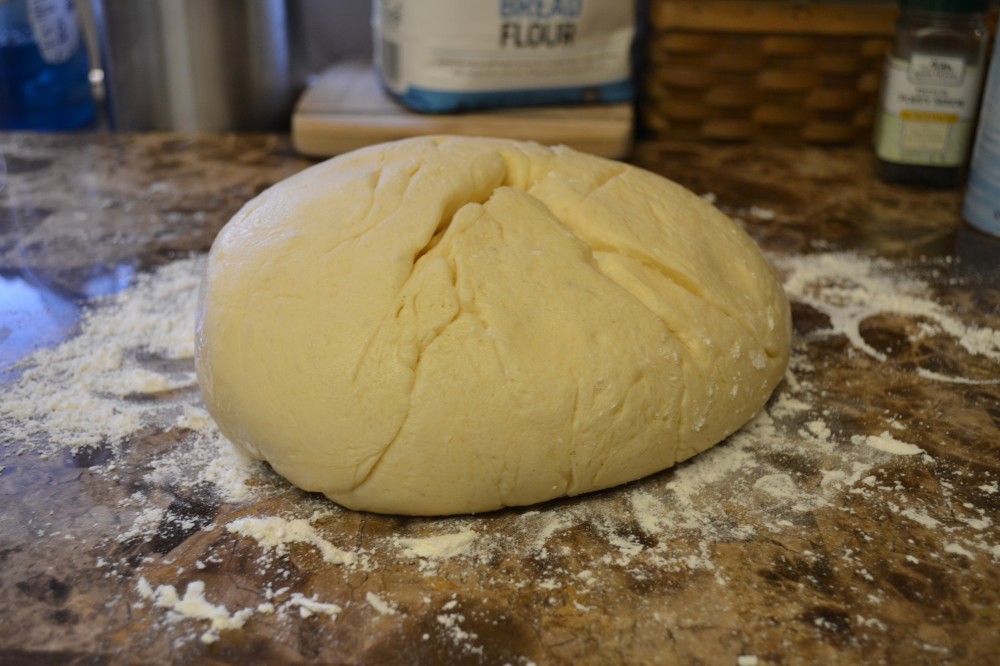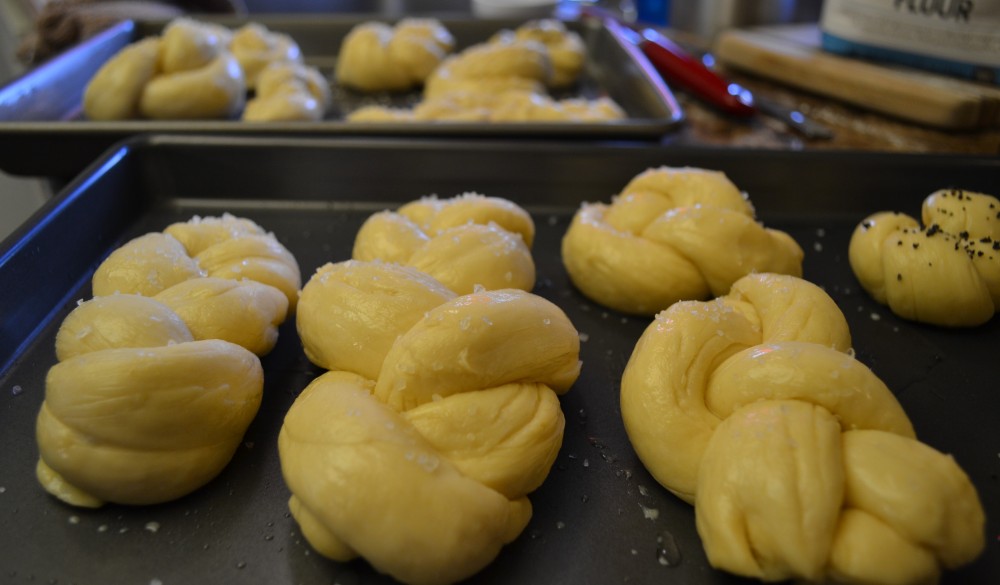Before sliced bread, the Cubs won the World Series. I keep hearing this as a reference to how long it’s been. Well, things change. The Cubs are on top again, and I’m learning about flour.

Because I want to be a reliable baker who knows the difference between all-purpose, white wheat, and bread flour, today I’m brushing up on the basics. I’m baking soft dinner rolls with something called Strong White Flour. But first, what the heck is strong white flour?
Tired of being confused, I did some research for us, dear reader. Here’s the low down on the most common flours. We teach best what we most need to learn, so they say. Hopefully, this will help us both.
First off, this is a wheat kernel. And probably more than you cared to know about it.
Most flour we use in the US comes from the wheat kernel of the wheat plant. The kernel has three sections: the bran, the endosperm, and the germ.

Bran. The bran, as you can see, is the outer shell of the kernel. The bran shell is fibrous. The bran is what gives whole wheat bread, for instance, fiber. So, whole wheat bread, muffins, etc.- anything made from whole wheat flour – contains the whole wheat kernel. The bran, once milled, has sharp edges. Tiny, microscopic sharp edges. Remember that. We’ll come back to it…
Endosperm. The endosperm makes up most of the interior of the wheat kernel and is milled to make white flours. Two proteins exist within the endosperm: gliadin and glutenin. Together, they create gluten. We’ll come back to that, too…
Germ. Meanwhile, deep inside the wheat kernel (like the seed of a grape) is the germ. The germ contains necessary fat.
Back to protein. When the two proteins that live in the endosperm are combined with liquid, they form gluten. Gluten is the essential glue that holds dough together. It’s a binding agent – a thickener – and determines the chewiness and density of breads, brownies, pastries and other baked goods.
For example, a muffin is more dense than a cupcake. A loaf of bread is more dense than a croissant. The flour used to make these denser goods necessarily contains more of the wheat kernel’s endosperm and, therefore, more protein. The more protein, the more gluten.
What about yeast? As the yeast added to dough activates, it releases carbon dioxide. You can feel the dough actually getting warmer as you knead it. Now imagine gluten as a net that traps the carbon dioxide. When the carbon dioxide gas gets trapped inside the dough, it rises.
So why is whole wheat dough flat if it has so much protein? If whole wheat uses the whole kernel, shouldn’t it rise more than any other dough? Well, it probably should except for the sharp little bran bits (remember those?) that cut the gluten stands as they begin to form. They act like little knives inside the dough, cutting the gluten net and setting the carbon dioxide free. Whole wheat breads, as a result, are quite dense.
Now, on to flours.
Totally off-topic, but worth it. I can’t think about various flours without recalling my favorite scene in the movie, “Stranger Than Fiction.” Mr. Krick (Will Ferrell) is an IRS auditor trying very awkwardly to win the heart of Miss Pascal (Maggie Gyllenhaal), a beautiful baker he is auditing. In this scene, he brings her a “bouquet” of flours. I’ll post the scene on my Facebook. It melts me.
Seriously, on to flours.
Self-rising flour has a protein count of about 8%. Very low. This flour is perfect for biscuits. Sometimes it’s also known as Soft Wheat flour. This flour contains baking powder and salt already. Different brands seem to add different amounts of baking powder and salt to their blends, so experiment to see which brand works best for you.
Cake Flour has about 9% protein content. It’s very fine and soft. Typically, cake flour comes in a box. It may be tucked in with the cake mixes instead of the flours at your grocery store. Softasilk is my go-to cake flour for making sponge cake and other airy treats. The dough has stability without toughness.
All-Purpose flour is just what it says. The protein count is middle-of-the-road (10.5 to 11+%, depending on the brand) so it works for most things. It’s dense enough for brownies; light enough for most cakes (not all). Sometimes All-Purpose flour is also called Hard Wheat flour.
Bread flour (the flour I’m using today), is also known as Strong White Flour (so I’ve learned!). It has a protein count of about 13% – a little more than All-Purpose. This makes for a stronger gluten net and more chewiness. Think of bagels and chewy dinner rolls.
Whole wheat flour has a protein count of about 14% so it creates denser baked goods. Remember those spikey bran shards that cut through the gluten net to keep it from rising? Whatever you’re making, it’s going to be dense.
White Whole Wheat flour is essentially the same as regular whole wheat flour, except their wheat kernels of origin are white and red, respectively. Don’t be fooled by the color of white wheat flour. It’s still a whole wheat flour and will result in a dense texture.
Those are the basics. There are so many other flours – more than I could ever hope to learn! Armed with knowledge, I’m feeling inspired to start experimenting. Bring on the White Strong Flour (a.k.a. Bread Flour)!
Soft Dinner Rolls!

This recipe is from “Breads & Baking”: editor, Gina Steer; Flame Tree Publishing; 2008.
You’ll need:

- 50 g unsalted butter
- 1 tbsp. caster sugar
- 8 fl. oz milk
- 550 g Strong White Flour (or Bread Flour)
- 1 1/2 tsp salt
- 2 tsp active dry yeast (*Note: dry yeast is only good for about 4-6 months after opening. Also, once open, keep it refrigerated or in the freezer. Check your expiration date before starting.)
- 2 medium eggs, beaten
To glaze and finish:
- 2 tbsp. milk mixed with about 1 tbsp. of beaten egg
- 1 tsp sea salt
- 2 tsp poppy seeds
- 2 tsp sesame seeds
Heat the butter, milk and sugar in a small saucepan until the butter is melted. It should be warm, but not hot. This mix will activate your yeast. If it’s too hot, it will kill the yeast and your bread won’t rise.

Sift the flour and salt into a mixing bowl. Stir in the dry yeast and make a well in the center. Reserve 1 tbsp. of the beaten eggs for brushing the rolls before baking.
Pour the beaten eggs and warm milk mixture into the well.

Knead by hand or use a stand-mixer to knead the dough for about 10 minutes. You’ll feel the dough get warmer as the yeast activates. After about 10 minutes, the dough should be smooth and elastic.
Put the dough in a lightly oiled bowl and cover loosely with plastic wrap.

I use my microwave as a proofer. To do this, put a small bowl of water in the microwave and heat until boiling (2-3 minutes). After the microwave shuts off, put the dough in the microwave with the steaming bowl of water. Let it rise for 1 hour or until about doubled in size.

After the dough has risen, knead by hand another minute or so. Divide the dough into 16 equal pieces.


Shape the 16 pieces into balls, braids, cottage buns. Just have fun with it.
Place your rolls on 2 lightly oiled baking pans and cover loosely with plastic wrap. Let them rise for 30 minutes. To keep them warm, you can set them on the stove as the oven preheats. They should double in size.


Preheat the oven to 425 degrees.
Once the rolls have risen, brush them with the egg/milk mixture. Alternate sprinkling them with sea salt, sesame seeds or poppy seeds. Or leave them plain.

Bake the rolls in the oven for about 20 minutes or until golden. I baked mine 10 minutes and then turned them 180 degrees for even browning. Toward the end, I moved them to the top rack to keep the bottoms golden (not too brown). Everyone’s oven is different. Don’t be afraid to move things around a bit for the best result.
Transfer to a wire rack and cover with a towel to keep them soft.

Let them cool as long as you can stand it then break out the butter and jam!

Happy baking!
